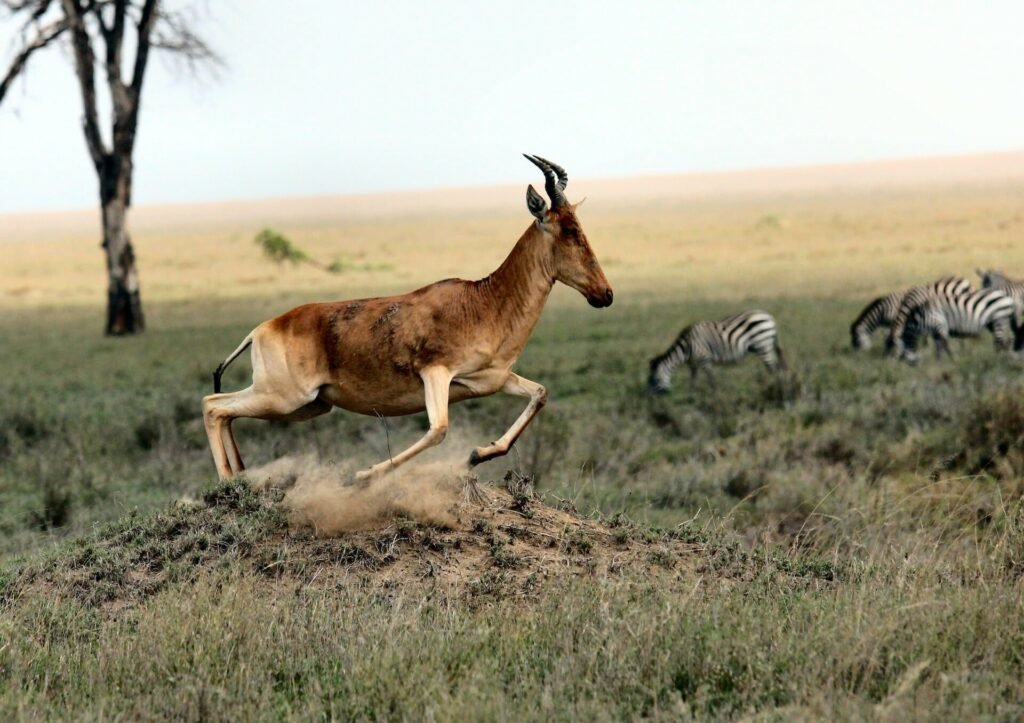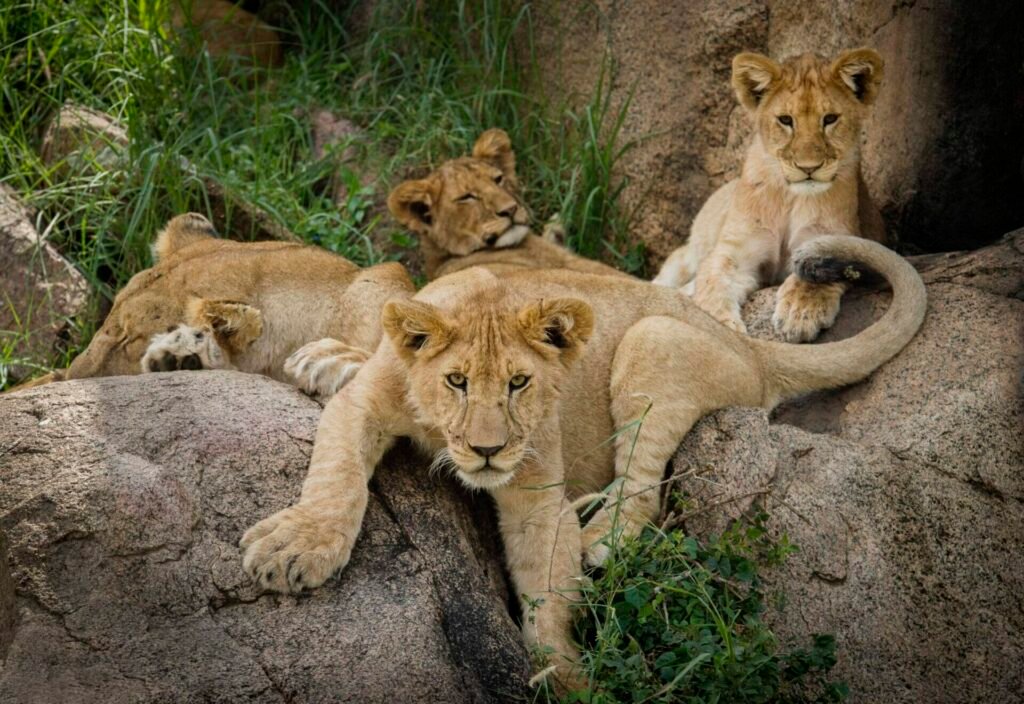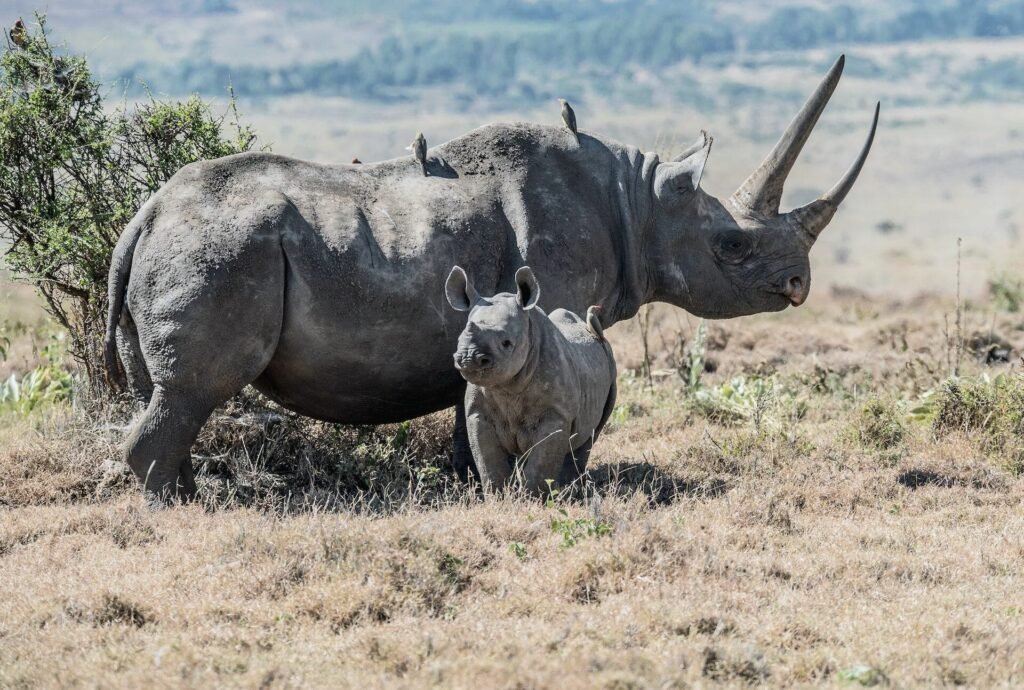Tanzania: Home of the Great Migration
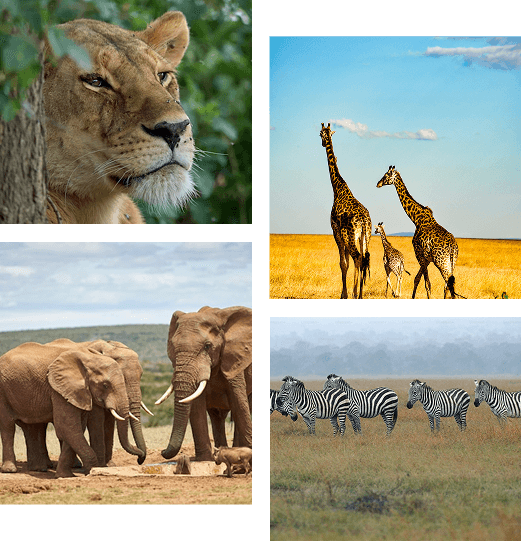
Tanzania at a Glance
Best Time to Visit
Year-round; June-October (dry season) optimal for wildlife viewing
Ideal Trip Duration
7-14 days
Signature Wildlife
Great Migration herds, Big Five, chimpanzees, endemic island species
Key Highlights
Serengeti Migration, Ngorongoro Crater, Mount Kilimanjaro, Zanzibar beaches
Getting There
International flights to Kilimanjaro, Dar es Salaam, or Zanzibar airports
Visa Requirements
Available on arrival or online in advance
Currency
Tanzanian Shilling (TZS)
Languages
Swahili, English
Combines Well With
Uganda, Rwanda, Kenya, Zanzibar
Recommended Tanzania Itineraries
Top National Parks & Reserves
Serengeti National Park
Home to the Great Migration and abundant predators
- Key Wildlife: Wildebeest, zebra, gazelles, lions, leopards, cheetahs
- Best Time: Year-round (different migration highlights by season)
- Unique Experiences: Migration river crossings (Jun-Oct), calving season (Jan-Feb), hot air balloon safaris
- Landscape: Endless short-grass plains, rocky outcrops, riverine forests, acacia woodlands
Ngorongoro Conservation Area
World's largest intact volcanic caldera
- Key Wildlife: Dense concentration of lions, elephants, rhinos, hippos, 25,000+ large mammals
- Best Time: Year-round (June-September for clearest visibility)
- Unique Experiences: Full-day crater game drives, Maasai cultural visits, Olduvai Gorge archaeological site
- Landscape: 600m deep crater with diverse habitats, highlands, and archaeological sites
Tarangire National Park
Elephant paradise with iconic baobab trees
- Key Wildlife: Large elephant herds, tree-climbing pythons, diverse antelope species, 550+ bird species
- Best Time: June-October (dry season when wildlife concentrates along the river)
- Unique Experiences: Walking safaris, night drives, seasonal wetland wildlife
- Landscape: Baobab-studded savanna, seasonal swamps, permanent river
Lake Manyara National Park
Compact park with remarkable biodiversity
- Key Wildlife: Tree-climbing lions, hippos, elephants, huge flamingo flocks (seasonal)
- Best Time: July-October and December-February (drier seasons)
- Unique Experiences: Canopy walkway, bicycle tours, cultural visits, night drives
- Landscape: Groundwater forest, acacia woodlands, hot springs, alkaline lake
Mahale Mountains National Park
Remote chimpanzee haven on Lake Tanganyika
- Key Wildlife: Habituated chimpanzee communities, forest mammals, 350+ bird species
- Best Time: July-October (dry season)
- Unique Experiences: Chimpanzee tracking, beach relaxation, boat safaris, fishing
- Landscape: Forested mountains meeting white-sand beaches on crystal-clear lake
Signature Wildlife Experiences
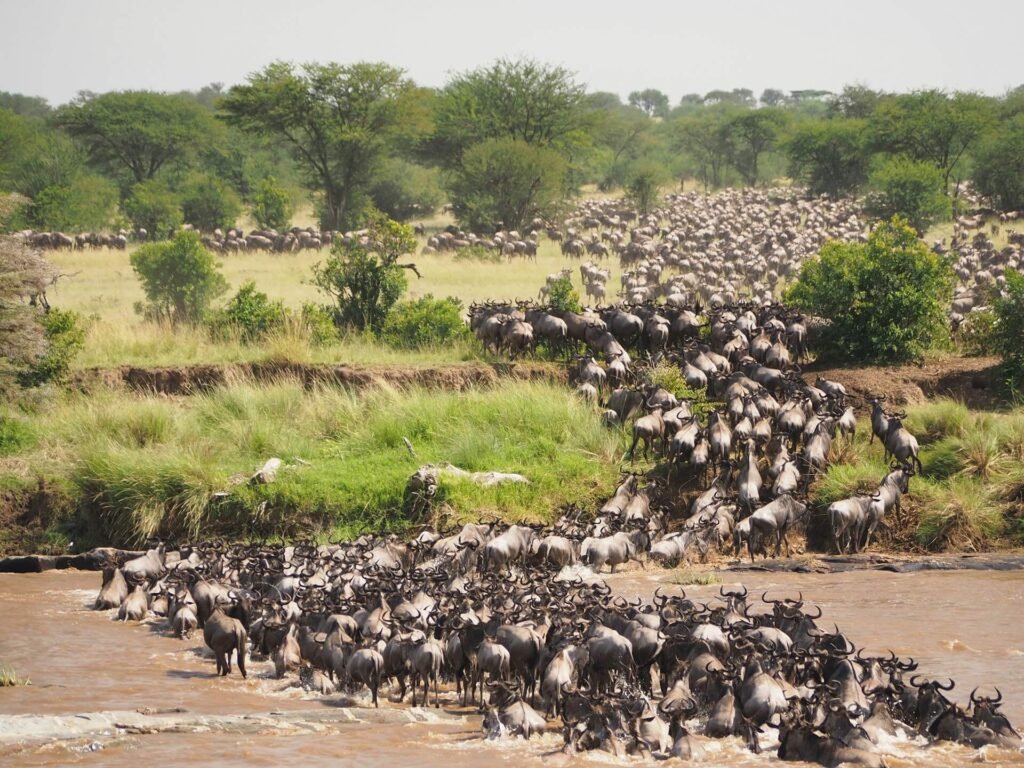
Great Migration River Crossings
Nature's most dramatic wildlife spectacle
Witness thousands of wildebeest and zebra brave crocodile-infested waters during dramatic river crossings in the Northern Serengeti. This life-and-death struggle represents the most sought-after safari sighting in Africa, combining breathtaking drama with remarkable photographic opportunities.
Best time: July-October (Northern Serengeti river crossings)
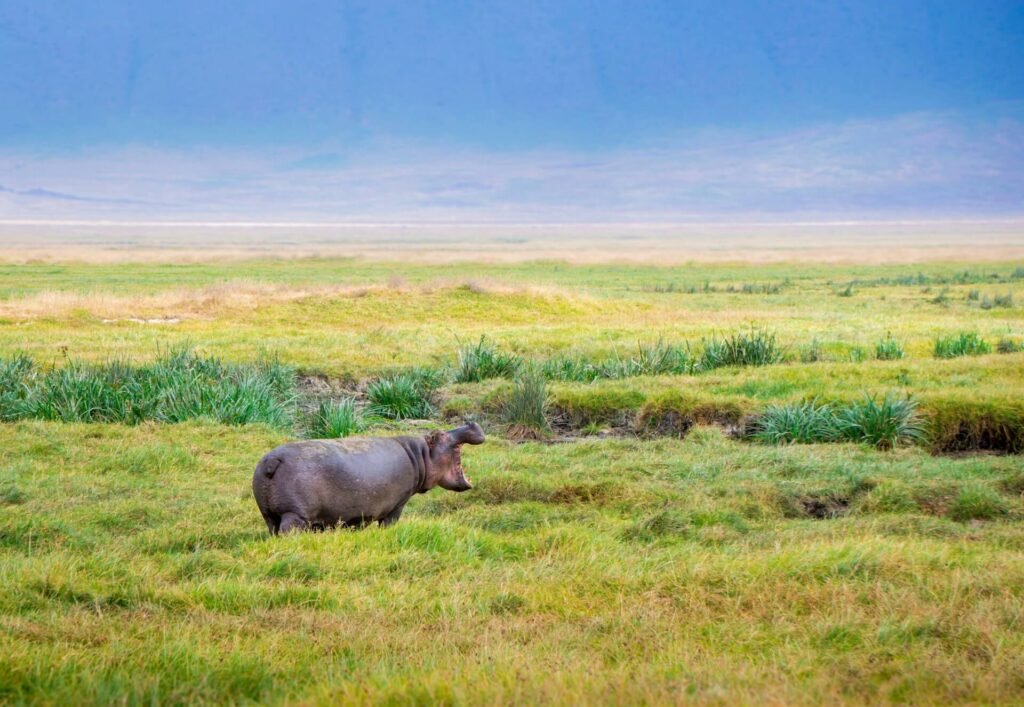
Ngorongoro Crater Game Drive
Exceptional concentration of predators
Descend 600 meters into the world’s largest intact volcanic caldera to explore a 260 sq km natural sanctuary that contains one of Africa’s densest concentrations of wildlife. The crater offers reliable sightings of all Big Five animals, including endangered black rhino, within spectacular volcanic scenery.
Best time: Year-round (clearest views June-September)
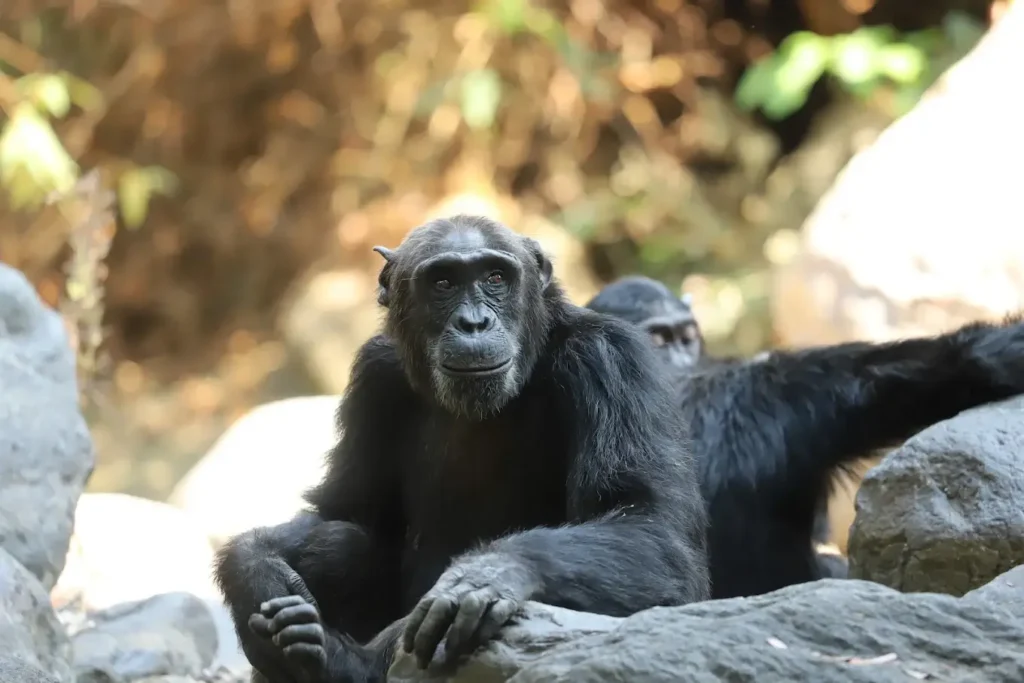
Chimpanzee Tracking in Mahale
Intimate encounters in pristine forest
Trek through the lush forests of the Mahale Mountains to spend time with one of Africa’s most studied chimpanzee communities. Unlike gorilla encounters, chimps are highly active, providing fascinating opportunities to observe complex social behavior, tool usage, and remarkable intelligence.
Best time: July-October (dry season with most reliable chimp sightings)
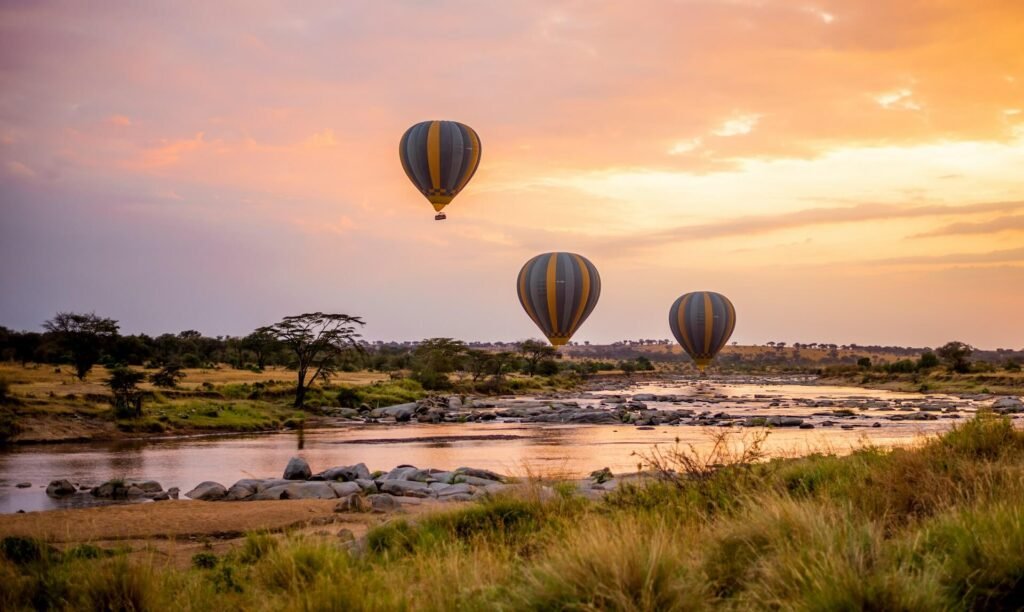
Hot Air Balloon Safari
Aerial perspective over the Serengeti
Float silently above the plains at dawn, watching predators hunting and thousands of animals beginning their daily movements from a unique vantage point. The flight concludes with a champagne breakfast in the bush, creating an unforgettable safari memory.
Best time: Year-round (best wildlife viewing June-October)
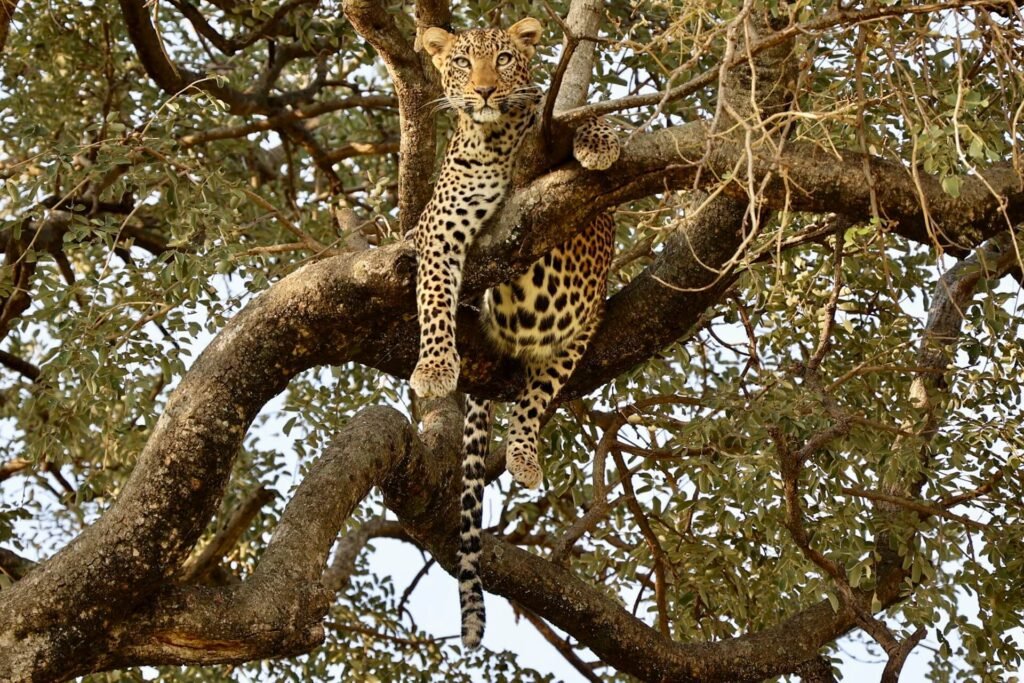
Big Cats of the Serengeti
Unparalleled predator viewing
The Serengeti ecosystem supports the highest concentration of large predators in Africa, including over 3,000 lions. Specialized safari experiences focus on locating and observing these magnificent cats, including the tree-climbing lions of Central Serengeti and the cheetahs of the southern plains.
Best time: Year-round (December-March for lion cubs)
Beyond Wildlife: Cultural & Adventure Experiences
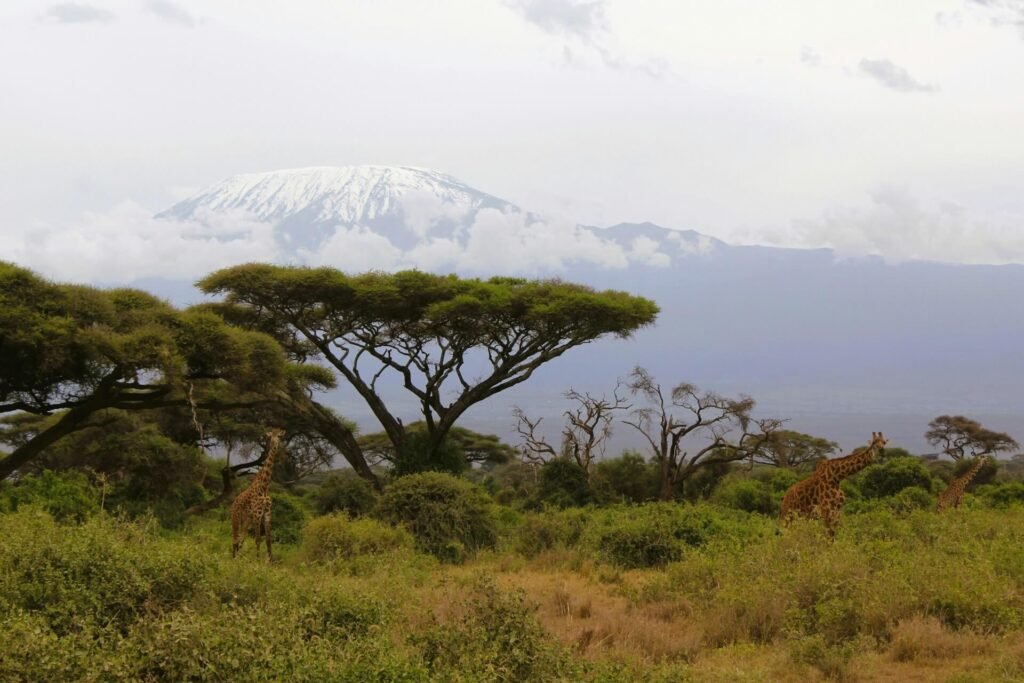
Mount Kilimanjaro Climb
Maasai Cultural Immersion
Stone Town Historical Tour
Spice Plantation Experience
Southern Highlands Coffee Route
When to Visit Tanzania: Seasonal Guide
Dry Season (June-October)
- Peak wildlife viewing with animals concentrated around water sources
- Spectacular wildebeest river crossings in Northern Serengeti
- Excellent visibility with minimal vegetation and clear skies
- Comfortable temperatures and little rain
- Peak season rates and higher visitor numbers in popular parks
Green Season (November-May)
- Lush landscapes with dramatic skies perfect for photography
- Wildebeest calving season in Southern Serengeti (January-February)
- Excellent birdwatching with migratory species present
- Lower visitor numbers and special offers at many properties
- Short rains (November-December) and long rains (March-May)
Featured Accommodation
Singita Sasakwa Lodge
Beyond Ngorongoro Crater Lodge
Nomad Lamai Serengeti
Conservation & Community Impact
Great Migration Ecosystem Protection
Empowering Local Communities
Practical Information
Health & Safety
Visa & Entry Requirements
Tanzania's Safari Circuits
Accommodation Types
Getting Around
Our Latest Tanzania Travel Blogs
- Category: Gorilla Tracking, Tanzania, Uganda, Wildlife
- Category: Rwanda, Tanzania, Travel with Kikooko, Uganda
- Category: Rwanda, Tanzania, Uganda

